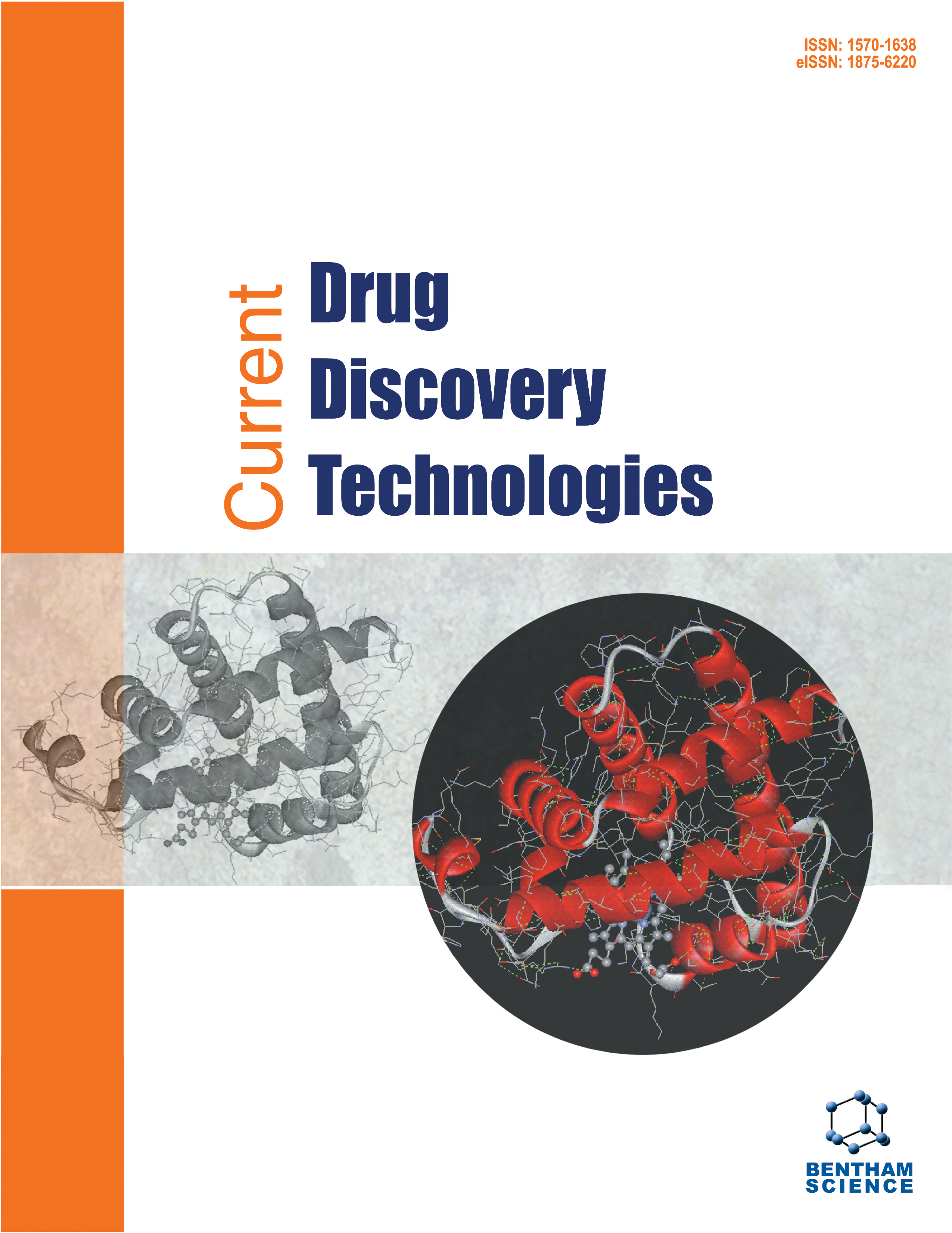- Home
- A-Z Publications
- Current Drug Discovery Technologies
- Previous Issues
- Volume 19, Issue 1, 2022
Current Drug Discovery Technologies - Volume 19, Issue 1, 2022
Volume 19, Issue 1, 2022
-
-
Drug Repositioning: A Unique Approach to Refurbish Drug Discovery
More LessFor a decade, it has been observed that there is a remarkable decrease in the quantum of novel clinically approved drugs, in spite of modernization in the research and development process. We have highlighted repositioning of drugs as a methodology that has found new therapeutic implications for clinically approved drugs but with different indications. This can be considered as an upbringing strategy to deliver timel Read More
-
-
-
Prunella vulgaris L: Critical Pharmacological, Expository Traditional Uses and Extensive Phytochemistry: A Review
More LessBackground: Prunella vulgaris , family Lamiaceae also known as self-heal, has been traditionally used as an expectorant, anti-inflammatory, anti-pyretic, and anti-rheumatic. Due to the widespread distribution of the plant, Vulgaris is also called ‘vulgar’ in Latin adjective meaning common. Objective: The objective of this review was to describe the relevant aspects of phytochemistry and therapeutic uses of different fraction Read More
-
-
-
Inebilizumab-cdon: USFDA Approved for the Treatment of NMOSD (Neuromyelitis Optica Spectrum Disorder)
More LessAuthors: Faraat Ali, Kamna Sharma, Varisha Anjum and Asad AliInebilizumab-cdon (Uplizna™) was currently approved by the United States Food and Drug Administration (USFDA) for the treatment of NMOSD (neuromyelitis optica spectrum disorder). It was developed by Viela Bio (Nasdaq: VIE) USA. Inebilizumab-cdon (formerly MEDI-551) is a humanized antibody, which induces CD19 + B cell depletion by increasing antibody-dependent cell cytotoxicity (ADCC) and cell phagocytosis (ADCP) Read More
-
-
-
Effect of Anti-Retroviral Drug Impurity/Related Substances on the CCR5 and/or CXCR4 Receptors Binding Sites to Revise Resistance Mechanisms in the Clinical Implications Using Molecular Docking Studies
More LessAuthors: Rinchi Bora, M.R. Jeyaprakash and S. JubieBackground: CCR5 and/or CXCR4 receptors on CD4+ T cell membranes are the active sites for HIV to bind. The different classes of drugs have a unique mechanism of action to cease the virus, but we are concentrating in the first-class i.e. NNRTI that destroys the virus while it binds to the cell surface gp120 protein. The drugs are having several impurities that can be genotoxic and few are reported in the monographs. Objectiv Read More
-
-
-
Aqueous Extract of Cola nitida and Garcinia kola Synergistically Enhances Hippocampal-hypothalamic Glutamate and Na+ /K+ -ATPase Activity in Male Wistar Rats
More LessBackground: The incidence of cognitive decline has been proposed to rise exponentially in the coming years. Therapies targeting molecular pathways involved in the enhancement of memory and energy regulation could be a major breakthrough in the prevention or management of dementia in susceptible populations. Objectives: This study investigated the effects of aqueous extracts of Cola nitida (AECONS) and Gar Read More
-
-
-
Synthesis, Cytotoxicity Evaluation and Molecular Docking of Fluorine Containing Hexahydroquinoline-3-Carbonitrile Derivatives
More LessAuthors: Nishith Teraiya, Subhas S. Karki and Ashlesha ChauhanBackground: Fluorine containing hexahydroquinoline-3-carbonitrile derivatives were found to have potent cytotoxicity. Furthermore, fluorine can modulate pharmacokinetic and pharmacodynamic profile of drugs. Hence, new derivatives containing fluorine were explored as potential cytotoxic agents. Objective: Difluoro substituted compounds containing aromatic/heteroaromatic rings were designed, synthesized and screened f Read More
-
-
-
The Development of New Low-Molecular-Weight Factor Xa Inhibitors that are Potential Anticoagulants
More LessBackground: Despite the introduction of direct oral anticoagulants, the search for new oral anticoagulants remains an urgent task. Objective: By using docking and scoring, based on physical methods, simple chemical rules, methods of synthesis, and activity measurement, develop new low-molecular-weight inhibitors of factor Xa, which are potential anticoagulants. Methods: The development of leads was based on chemical Read More
-
-
-
Pharmacological Study of A3 Adenosine Receptor agonist (AB Meca) in Xenograft Lung Cancer Model in Mice through In Silico and In Vivo Approach: Targeting TNF-α
More LessAuthors: Nilay Solanki, Leena Patel, Shaini Shah, Ashish Patel, Swayamprakash Patel, Mehul Patel and Umang ShahBackground: Lung cancer is the leading cause of mortality in India. Adenosine Receptor (AR) has emerged as a novel cancer-specific target. A3AR levels are upregulated in various tumor cells, which may mean that the specific AR may act as a biological marker and target specific ligands leading to cell growth inhibition. Aim: Our aim was to study the efficacy of the adenosine receptor agonist, AB MECA, by in silico (molecul Read More
-
Volumes & issues
-
Volume 22 (2025)
-
Volume 21 (2024)
-
Volume 20 (2023)
-
Volume 19 (2022)
-
Volume 18 (2021)
-
Volume 17 (2020)
-
Volume 16 (2019)
-
Volume 15 (2018)
-
Volume 14 (2017)
-
Volume 13 (2016)
-
Volume 12 (2015)
-
Volume 11 (2014)
-
Volume 10 (2013)
-
Volume 9 (2012)
-
Volume 8 (2011)
-
Volume 7 (2010)
-
Volume 6 (2009)
-
Volume 5 (2008)
-
Volume 4 (2007)
-
Volume 3 (2006)
-
Volume 2 (2005)
-
Volume 1 (2004)
Most Read This Month
Article
content/journals/cddt
Journal
10
5
false
en


